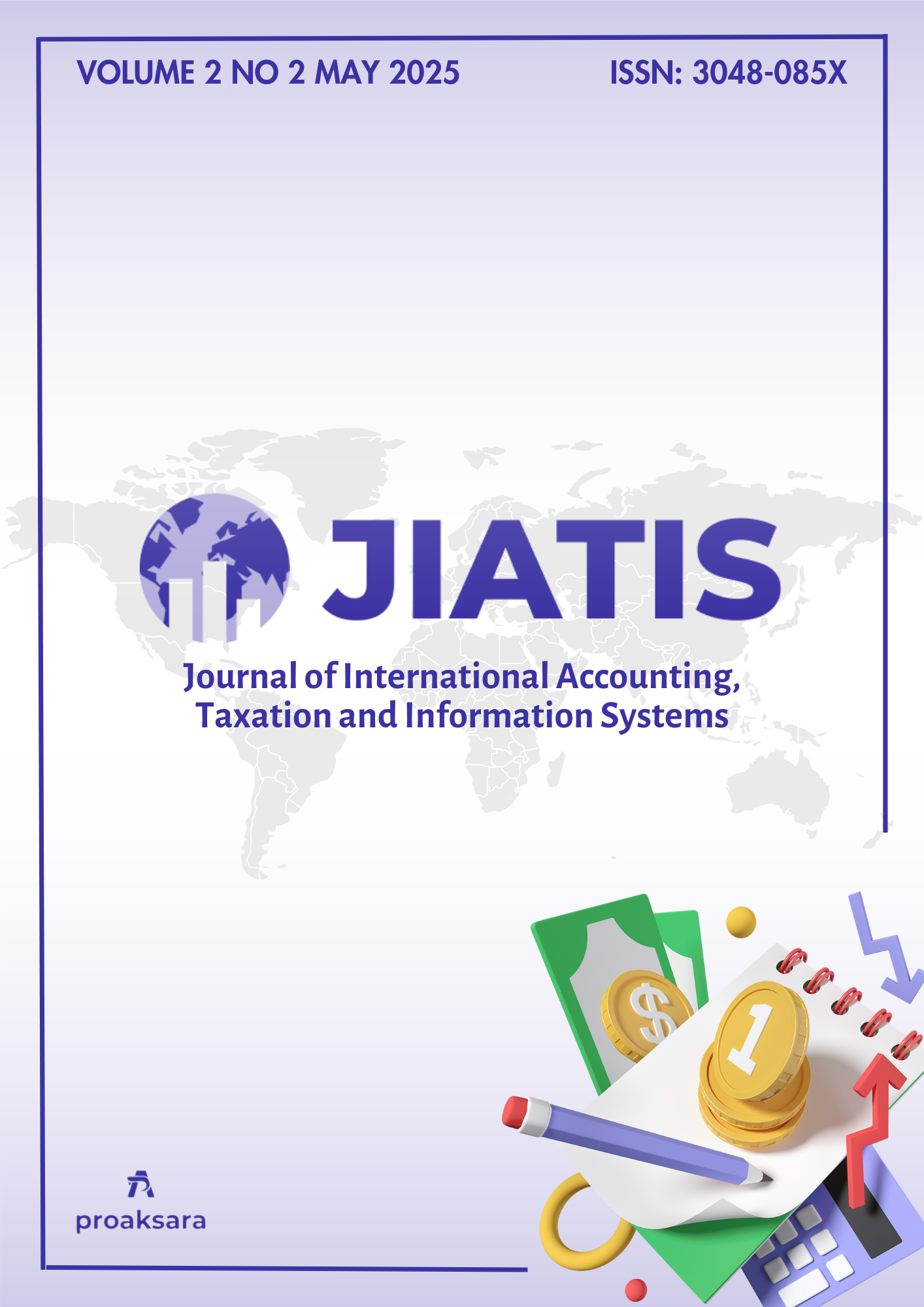The Strategic Role of Machine learning Algorithms in Bolstering Cybersecurity and Resilience
Main Article Content
Khudai Qul Khaliqyar*
Navid Bikzad
Abdul Qadir Nasimi
The rapid evolution of cyber threats in recent years has intensified the need for intelligent and adaptive security measures. Machine learning (ML) has emerged as a promising solution, offering capabilities for real-time threat detection, prediction, and autonomous response. This systematic literature review aims to investigate the effectiveness of various machine learning algorithms in enhancing cybersecurity between 2018 and 2025. Using a predefined search strategy, articles were sourced from reputable databases including MDPI, ScienceDirect, IEEE Xplore, and SpringerLink. The review focused on peer-reviewed research examining the application of ML in cybersecurity contexts such as threat detection, cyber resilience, and automated incident response. A total of 25 studies were selected after applying strict inclusion and exclusion criteria. The analysis revealed that deep learning and ensemble methods showed superior performance in detecting complex threats, while supervised learning was prevalent in intrusion detection systems. However, issues like data imbalance, adversarial attacks, and ethical transparency were noted as significant challenges. The findings underscore the transformative role of ML in cybersecurity, yet emphasize the need for interpretability and ethical oversight. This review concludes that integrating ML with existing defense systems and human expertise is essential for building adaptive, resilient, and ethical cybersecurity solutions in the evolving digital landscape.
Achuthan, K., Sankaran, S., Roy, S., & Raman, R. (2025). Integrating sustainability into cybersecurity: insights from machine learning based topic modeling. Discover Sustainability, 6(1), 44. https://doi.org/10.1007/s43621-024-00754-w
Ahmad, S., Haque, M. A., Abdeljaber, H. A. M., Eljialy, A. E. M., Nazeer, J., & Mishra, B. K. (2025). Machine Learning Approaches in Cybersecurity to Enhance Security in Future Network Technologies. SN Computer Science, 6(4), 301. https://doi.org/10.1007/s42979-025-03853-1
Alam, M., Deepak, Pandey, B., Ahmad, S., Shahid, M., & Ahmad, F. (2024). Machine Learning In Cybersecurity: Opportunities and Challenges. 2024 IEEE 16th International Conference on Computational Intelligence and Communication Networks (CICN), 663–670. https://doi.org/10.1109/CICN63059.2024.10847405
Alavi, M., Albaji, M., Golabi, M., Naseri, A. A., & Homayouni, S. (2023). Evaluating Remote Sensing Technique and Machine Learning Algorithms in Estimating Sugarcane Evapotranspiration. Water and Irrigation Management, 13(4), 965–982.
Brown, P., & Zhuang, H. (2023). Quantum machine-learning phase prediction of high-entropy alloys. Materials Today, 63, 18–31.
Chen, Y., Haywood, J., Wang, Y., Malavelle, F., Jordan, G., Partridge, D., Fieldsend, J., De Leeuw, J., Schmidt, A., & Cho, N. (2022). Machine learning reveals climate forcing from aerosols is dominated by increased cloud cover. Nature Geoscience, 15(8), 609–614.
Fard, N. E., Selmic, R. R., & Khorasani, K. (2023). A Review of Techniques and Policies on Cybersecurity Using Artificial Intelligence and Reinforcement Learning Algorithms. IEEE Technology and Society Magazine, 42(3). https://doi.org/10.1109/MTS.2023.3306540
Frugh, Q. A., Naseri, M. F., & Hakimi, M. (2024). Experimental Comparison of Encryption Algorithms On Smart Devices. TIERS Information Technology Journal, 5(2), 184–192. https://doi.org/10.38043/tiers.v5i2.6039
Gautam, M. (2023). Deep Reinforcement Learning for Resilient Power and Energy Systems: Progress, Prospects, and Future Avenues. In Electricity (Vol. 4, Issue 4). https://doi.org/10.3390/electricity4040020
Gupta, R., & Srivastava, P. (2025). Artificial intelligence and machine learning in cyber security applications. In Cyber Security Solutions for Protecting and Building the Future Smart Grid (pp. 271–296). Elsevier. https://doi.org/10.1016/B978-0-443-14066-2.00004-9
Hakimi, M., Suranata, I. W. A., Ezam, Z., Samadzai, A. W., Enayat, W., Quraishi, T., & Fazil, A. W. (2025). Generative AI in Enhancing Hydroponic Nutrient Solution Monitoring. Jurnal Ilmiah Telsinas Elektro, Sipil Dan Teknik Informasi, 8(1), 94–103. https://doi.org/10.38043/telsinas.v8i1.6242
Hasas, A., Zarinkhail, M. S., Hakimi, M., & Quchi, M. M. (2024). Strengthening Digital Security: Dynamic Attack Detection with LSTM, KNN, and Random Forest. Journal of Computer Science and Technology Studies, 6(1). https://doi.org/10.32996/jcsts.2024.6.1.6
Huang, G., Guo, Y., Chen, Y., & Nie, Z. (2023). Application of machine learning in material synthesis and property prediction. Materials, 16(17), 5977.
Katzir, Z., & Elovici, Y. (2018). Quantifying the resilience of machine learning classifiers used for cyber security. Expert Systems with Applications, 92. https://doi.org/10.1016/j.eswa.2017.09.053
Khan, S. A., Eze, C., Dong, K., Shahid, A. R., Patil, M. S., Ahmad, S., Hussain, I., & Zhao, J. (2022). Design of a new optimized U-shaped lightweight liquid-cooled battery thermal management system for electric vehicles: A machine learning approach. International Communications in Heat and Mass Transfer, 136, 106209.
Miller, T., Mikiciuk, G., Kisiel, A., Mikiciuk, M., Paliwoda, D., Sas-Paszt, L., Cembrowska-Lech, D., Krzemińska, A., Kozioł, A., & Brysiewicz, A. (2023). Machine learning approaches for forecasting the best microbial strains to alleviate drought impact in agriculture. Agriculture, 13(8), 1622.
Nandini, K., Yaramsetty, A., & Tulasirama, M. (2024). Enhancing Cybersecurity Resilience: A Study of Threat Detection and Mitigation Techniques in Modern Networks. Library of Progress-Library Science, Information Technology & Computer, 44(3).
Okoli, U. I., Obi, O. C., Adewusi, A. O., & Abrahams, T. O. (2024). Machine learning in cybersecurity: A review of threat detection and defense mechanisms. World Journal of Advanced Research and Reviews, 21(1), 2286–2295. https://doi.org/10.30574/wjarr.2024.21.1.0315
Olowononi, F. O., Rawat, D. B., & Liu, C. (2021). Resilient Machine Learning for Networked Cyber Physical Systems: A Survey for Machine Learning Security to Securing Machine Learning for CPS. IEEE Communications Surveys and Tutorials, 23(1). https://doi.org/10.1109/COMST.2020.3036778
Patel, H., Kumar Singh, D., Prakash Verma, O., & Kadian, S. (2023). Machine learning approach for thermal characteristics and improvement of heat transfer of nanofluids—a review. International Conference on MAchine InTelligence for Research & Innovations, 227–233.
Prakash, V. S., Murugesan, P., Poongothai, P., N, S. B., Vijayakumar, P., & Shriidhar, P. J. (2024). Artificial Intelligence in Cybersecurity: Enhancing Automated Defense Mechanisms to Combat Sophisticated Cyber Threats and Guarantee Digital Resilience. 2024 5th IEEE Global Conference for Advancement in Technology (GCAT), 1–6. https://doi.org/10.1109/GCAT62922.2024.10923968
Rahimi, N., Hakimi, M., Rahmani, K., Rastagari, M. A., Danish, J., & Shahbazi, H. (2025). Metaverse Security Challenges and Solutions: A Comprehensive Analysis of Contemporary Technologies. International Journal on Advanced Technology Engineering and Information System (IJATEIS), 4(1), 160–173. https://doi.org/10.55047/ijateis.v4i1.1674
Rahman, M. J., Ahmed, M. S., Biswas, S., Orchi, A. T., Rahman, R., & Islam, A. K. M. M. (2024). CropCare: Advanced Crop Management System with Intelligent Advisory and Machine Learning Techniques. 2024 6th International Conference on Electrical Engineering and Information & Communication Technology (ICEEICT), 1356–1361.
Ramirez, C., & Lopez, J. (2023). From Data to Defense: The Role of AI and Machine Learning in Revolutionizing Cybersecurity. Journal of Computational Innovation, 3(1).
Rane, N., Choudhary, S., & Rane, J. (2024). Artificial intelligence for enhancing resilience. Journal of Applied Artificial Intelligence, 5(2), 1–33. https://doi.org/10.48185/jaai.v5i2.1053
Rodriguez, P., & Costa, I. (2024). Artificial Intelligence and Machine Learning for Predictive Threat Intelligence in Government Networks. Advances in Computer Sciences, 7(1), 1–10.
Roshanaei, M., Khan, M. R., & Sylvester, N. N. (2024). Enhancing Cybersecurity through AI and ML: Strategies, Challenges, and Future Directions. Journal of Information Security, 15(03), 320–339. https://doi.org/10.4236/jis.2024.153019
Sarjito, A. (2025). The Impact of Machine Learning on Future Defense Strategies. Pelita : Jurnal Penelitian Dan Karya Ilmiah, 24(2), 71–82. https://doi.org/10.33592/pelita.v24i2.5130
Sarker, I. H. (2024). Learning Technologies: Toward Machine Learning and Deep Learning for Cybersecurity. In AI-Driven Cybersecurity and Threat Intelligence (pp. 43–59). Springer Nature Switzerland. https://doi.org/10.1007/978-3-031-54497-2_3
Sharma, B. P. (2024). Evaluating the Role of Artificial Intelligence in Enhancing Cyber Threat Detection and Response Mechanisms. Journal of Digital Transformation, Cyber Resilience, and Infrastructure Security, 8(12), 1–10.
Vaddadi, S. A., Vallabhaneni, R., & Whig, P. (2023). Utilizing AI and machine learning in cybersecurity for sustainable development through enhanced threat detection and mitigation. International Journal of Sustainable Development Through AI, ML and IoT, 2(2), 1–8.
Van Hoang, N. (2023). Human Expertise and Machine Learning in Collaborative Intelligence Frameworks for Robust Cybersecurity Solutions. Journal of Applied Cybersecurity Analytics, Intelligence, and Decision-Making Systems, 13(12), 1–12.
Verma, N., Singh, S., & Prasad, D. (2022). Machine learning and IoT‐based model for patient monitoring and early prediction of diabetes. Concurrency and Computation: Practice and Experience, 34(24), e7219.
Xu, L., Fan, D., Liu, K., Xu, W., & Yu, R. (2024). A machine learning framework for intelligent development of Ultra-High performance concrete (UHPC): From dataset cleaning to performance predicting. Expert Systems with Applications, 242, 122790.
Yu, J., Shvetsov, A. V., & Hamood Alsamhi, S. (2024). Leveraging Machine Learning for Cybersecurity Resilience in Industry 4.0: Challenges and Future Directions. IEEE Access, 12, 159579–159596. https://doi.org/10.1109/ACCESS.2024.3482987
















